In the realm of outdoor recreation, one often-debated topic is the suitability of hiking in sneakers. The use of this common form of footwear for such a specialized activity raises several questions regarding safety, comfort, and performance. While some argue that sneakers, being lightweight and comfortable, are perfect for a casual hike, others contend that they lack the necessary support and durability that hiking boots provide.
This discussion aims to explore the pros and cons of hiking in sneakers, taking into consideration varied factors such as the type of terrain, weather conditions, individual comfort levels, and the physical demands of the hike. The objective is not to arrive at a definitive answer, but to provide insights that will guide hikers in making informed decisions about their footwear choices.
Key Takeaways
- Sneakers are suitable for well-maintained, flat trails without ankle support requirements
- Hiking boots provide built-in arch and ankle support for the rigors of hiking
- Weather conditions significantly influence comfort and safety during hiking
- Comfort is paramount when wearing sneakers for hiking
Understanding Footwear for Hiking
While sneakers can be a viable option for short and easy trails, especially in warm and dry weather, it's crucial to understand the limitations and potential risks associated with this type of footwear for hiking. Sneakers, although affordable and easily accessible, may lack the necessary ankle support and durability for more challenging or technical trails. For those embarking on the path of hiking, a pair of sneakers can be a good starting point, however, understanding footwear for hiking is fundamental to ensure safety and comfort.
If you're considering hiking in sneakers, it's recommended to choose trails that are well-maintained, flat, and do not require ankle support. Moreover, opt for sneakers with thicker soles to offer protection against sharp rocks. For those seeking an alternative, trail running shoes provide better support, traction, and durability compared to regular sneakers.
In essence, the right choice of hiking footwear greatly depends on the terrain and your individual needs. Being informed about the pros and cons of each option will empower you to make the best decision, and ensure your hiking experience is enjoyable, safe, and rewarding.
Sneakers Vs. Hiking Boots
When discussing hiking footwear, a significant topic of debate often emerges: sneakers versus hiking boots. Each of these choices presents unique benefits and drawbacks, including variations in comfort, durability, suitability for different terrains, and performance in varying weather conditions.
As we proceed, we will thoroughly analyze these factors to provide a comprehensive understanding of the most suitable footwear for hiking in different scenarios.
Comparing Comfort Levels
In assessing the comfort levels of sneakers versus hiking boots, it's important to note that sneakers can offer sufficient comfort for short and easy trails, but they generally lack the robust support and protection provided by specialized hiking footwear. When hiking in sneakers, the lack of ankle support and tread can lead to discomfort or even injury on challenging terrains.
Comparing comfort levels, hiking boots, with their built-in arch and ankle support, are designed for the rigours of actual hiking. Each pair of shoes offers different benefits: sneakers for light trails and boots for sturdier treks. Ultimately, the right choice depends on the trail and your personal comfort preferences.
Always remember, safety and comfort should be priority in your outdoor adventures.
Durability and Terrain Suitability
Building upon the theme of comfort, it is also imperative to consider the durability and terrain suitability of your footwear choice, as these factors play a significant role in your hiking experience.
Hiking boots, specifically designed to withstand the rigors of the trail, excel in durability. Their robust construction offers protection against sharp rocks, roots, and other rugged terrain elements.
Conversely, sneakers, suitable for level and smooth terrains, may deteriorate faster when faced with the harsh conditions of challenging trails. Their lack of ankle support could potentially lead to injury on uneven grounds.
While hiking boots are generally more durable and terrain-ready, they might be overkill for casual, well-maintained paths. Therefore, consider your hiking environment and plan your footwear accordingly.
Weather Impact on Footwear
Often overlooked, the impact of weather conditions on your choice of hiking footwear – be it sneakers or boots – is a crucial factor that significantly influences your outdoor adventure's comfort and safety. While hiking in sneakers may be suitable for warm and dry conditions, they may not provide sufficient protection in cold, rainy, or icy environments. Hence, the weather impact on footwear is vital to consider for a successful hiking experience.
| Sneakers | Hiking Boots | |
|---|---|---|
| Warm & Dry Conditions | Suitable | May be too warm |
| Rainy Conditions | Not recommended | Waterproof options available |
| Cold & Snowy Conditions | Insufficient protection | Insulated options available |
Understanding these differences can help you make an informed decision about whether to opt for sneakers or hiking boots, thereby ensuring a safer and more enjoyable hiking experience.
Types of Hiking Sneakers
Delving into the world of hiking footwear, one finds a variety of options, each offering unique benefits tailored to different hiking conditions and personal comfort preferences. The types of hiking sneakers available cater to a wide variety of needs and preferences, and understanding these differences is crucial to ensure a successful and enjoyable hiking experience.
- Trail Running Sneakers: These are designed to offer better support, protection, and traction compared to regular sneakers. They are an excellent choice for individuals who want to hike in sneakers on more challenging trails.
- Hiking Shoes: These lighter and more flexible options provide decent protection and support. They are suitable for both short and long-distance hikes across various terrains.
- Trail Running Sneakers vs. Hiking Shoes vs. Hiking Boots: Hiking shoes feature thicker soles for better traction, while hiking boots offer more support and protection, extending higher on the leg for additional ankle support.
When wearing sneakers for hiking, remember comfort is paramount. The right footwear depends on the individual's needs and the nature of the hike. For beginners on flat, well-maintained trails, sneakers can suffice. However, for rocky or icy trails, consider alternatives offering better protection and stability.
Terrain and Shoe Choice

The choice of footwear in hiking is significantly influenced by the terrain and the trail's difficulty level. While sneakers can be a comfortable choice for flat and even trails, they may fall short in providing the necessary support and protection under challenging conditions.
This necessitates a careful evaluation of other options, such as hiking boots or trail running shoes, when planning for more arduous hikes.
Assessing Trail Difficulty
Understanding the type of terrain you'll be traversing is a critical factor in selecting the appropriate footwear for your hiking adventure, particularly when contemplating the use of sneakers. For assessing trail difficulty, consider these three points:
- Evaluate the trail's terrain: Sneakers may suffice on flat, well-maintained hiking trails, but uneven or rocky trails necessitate footwear with better grip and support.
- Weather conditions: Sneakers are suitable for warm, dry conditions. They may fail to provide comfort and safety in wet or cold conditions.
- Distance of hike: Sneakers can be comfortable for short hikes. However, longer hikes often require more robust footwear.
Sneakers Versus Hiking Boots
In the realm of hiking footwear, the choice between sneakers and hiking boots largely hinges on the type of terrain and the length of the hike.
For flat, even trails of short distances, sneakers can be apt, particularly for those pondering, 'Is hiking in sneakers ok?' However, hiking boots offer better protection, essential for serious hikers tackling rough, uneven terrains or embarking on longer treks.
Indeed, the sneakers versus hiking boots debate is not a one-size-fits-all scenario. While sneakers, especially trail running shoes, can serve well on maintained trails and in dry weather, boots provide the durability, traction, and ankle support needed for more challenging conditions.
Ultimately, the right choice marries personal comfort and the demands of the trail.
Sneaker Features for Hiking
When selecting sneakers for hiking, it's imperative to consider features such as larger lugs on the soles for enhanced grip, foam padding for additional comfort, inserts for extra support, breathable materials like mesh or knit for ventilation, and cross-trainers for superior lateral support and stability. These are some of the crucial sneaker features for hiking that can make a significant difference during your outdoor adventures.
- Larger Lugs on the Soles: If you already have a pair of sneakers, check whether they have larger lugs on the soles. These offer better grip on different terrains, ensuring you maintain your footing even on slippery surfaces.
- Foam Padding and Inserts: Look for a shoe that offers foam padding and the option to include inserts. This feature allows for a more comfortable hiking experience by providing additional cushioning and support.
- Breathability and Lateral Support: Finally, consider the material and design of the sneakers. Breathable materials like mesh or knit keep your feet dry and cool, while cross-trainers provide better lateral support, enhancing stability on uneven terrains.
Safety Considerations
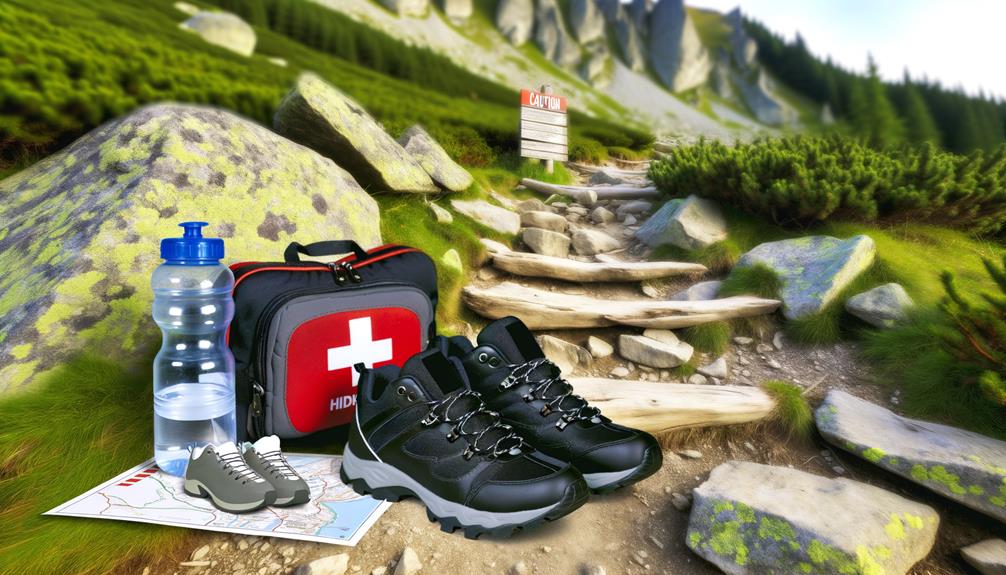
How best can one ensure safety while hiking in sneakers? Key safety considerations must be taken into account before embarking on a hike in sneakers.
An initial step should involve evaluating trail conditions. Some terrains might be too challenging for sneakers due to the lack of ankle support. Therefore, it's crucial to assess the trail difficulty before you commence your hike.
Another crucial factor is the weather forecast. Sneakers may not provide adequate protection in cold, wet or icy conditions. Therefore, it's paramount to consider the prevailing and anticipated weather conditions.
Moreover, regular inspection of your sneakers is necessary. Ensure they provide sufficient grip and support.
The table below summarises these safety considerations when hiking in sneakers:
| Safety Consideration | Action |
|---|---|
| Trail Conditions | Evaluate if the trail is too difficult for sneakers |
| Weather Forecast | Check if conditions are too cold, wet, or icy for sneakers |
| Ankle Support | Assess if sneakers provide enough support on uneven terrain |
| Sneaker Condition | Regularly inspect sneakers for proper grip and support |
| Potential Hazards | Be cautious on trails with slipping hazards |
Before you invest in hiking, considering these safety precautions can help ensure a safe and enjoyable hiking experience in sneakers.
Sneakers for Short Hikes
Having examined the safety considerations for hiking in sneakers, we now turn our attention to the suitability of sneakers for short hikes. The occasional hiker looking to go hiking on easy trails will find that sneakers are a convenient and affordable option. They are lightweight and provide breathability, offering comfort and flexibility for hiking in warm, dry conditions.
Here are three key points to consider:
- Sneakers are best suited for well-maintained, flat trails. They offer decent traction and comfort for hikes under three miles, making them ideal sneakers for short hikes.
- For protection against sharp rocks and warm weather, consider sneakers with thicker foam soles and breathable mesh uppers.
- Despite their suitability for certain conditions, sneakers lack the support and durability of hiking shoes or boots. They may not be adequate for challenging or rugged terrains.
As you prepare for hitting the trails, remember that while sneakers can be a viable choice for short, easy hikes, they may not offer the support needed for more strenuous or lengthy hikes. Choose your footwear wisely based on the conditions and difficulty of your hike.
Pros and Cons of Hiking in Sneakers

Balancing on the precipice between affordability and functionality, sneakers present a mixed bag of pros and cons when considered for hiking. The allure of buying hiking gear can be daunting, especially when a comfortable pair of sneakers is readily available.
The pros of hiking in sneakers include their affordability and accessibility; they provide a cost-effective option for those wanting to explore the outdoors without incurring significant gear expenses. They are also suitable for light, even terrains and can be an accessible starting point for new hikers.
However, as the old adage goes, you get what you pay for. The cons of hiking in sneakers can't be overlooked. They lack the support and protection that a specialized pair of hiking boots offer. This deficiency could lead to discomfort or even injuries, especially on challenging trails. The absence of ankle support increases the risk of twists and sprains. Moreover, sneakers may not be suitable for hikers with specific medical conditions, potentially causing discomfort or aggravating existing issues.
Making the Right Footwear Choice
Navigating the myriad of footwear options for hiking—from sneakers and trail running shoes to hiking shoes and boots—requires a careful consideration of various factors such as trail conditions, hike duration, personal comfort, and individual preferences. Making the right footwear choice is paramount for ensuring a safe and enjoyable hiking experience.
If you plan on hiking in sneakers, consider these three points:
- Terrain and Conditions: Sneakers may suffice for short, easy trails, but for varied terrains and longer hikes, consider trail running shoes or hiking shoes that offer better support and traction.
- Comfort and Fit: No matter the type of footwear, ensure it's comfortable and fits well. Ill-fitting shoes can lead to discomfort and injuries.
- Personal Preference: Ultimately, the choice of hiking footwear should align with your personal preference. Some prefer the lightness of sneakers, while others prefer the sturdiness of hiking boots.
Frequently Asked Questions
Is It Okay to Hike in Nike Shoes?
Yes, hiking in Nike shoes is permissible. They offer notable durability, ample sneaker traction, and commendable foot support. However, their weather resistance might be less than specialized hiking shoes, hence suitable for fair weather conditions.
Can I Hike in Walking Shoes?
Yes, hiking in walking shoes is permissible, considering terrain impact, shoe durability, and comfort consideration. However, for injury prevention, ensure they provide sufficient traction and ankle support, particularly on uneven or challenging trails.
What Shoes to Wear When Hiking?
When hiking, consider terrain analysis, weather impacts, foot health, and gear durability. Choose shoes with solid traction, weather resistance, appropriate foot support, and long-lasting quality to ensure a safe and comfortable hiking experience.
What to Wear if You Don't Have Hiking Boots?
Assessing terrain is crucial when hiking without boots. Opt for durable sneakers, considering ankle support and blister prevention. Deep-foam soles offer protection, while breathable mesh uppers are ideal in warm conditions. Old or dark sneakers resist dirt.
Conclusion
In navigating the labyrinth of mountainous trails, one's footwear plays an integral role. While sneakers may suffice in ideal conditions, they might falter in the face of harsher terrains and climates.
It's critical to weigh the pros and cons, considering factors like terrain, hike duration and weather. Ultimately, the choice between sneakers and hiking boots is a careful balancing act, a dance between comfort and the demands set by nature's unpredictable stage.

With years of extensive experience, I specialize in evaluating waterproof hiking shoe options across various brands. My goal is to offer valuable insights and recommendations, enhancing your hiking experience with tips and suggestions for a more adventurous and comfortable journey.

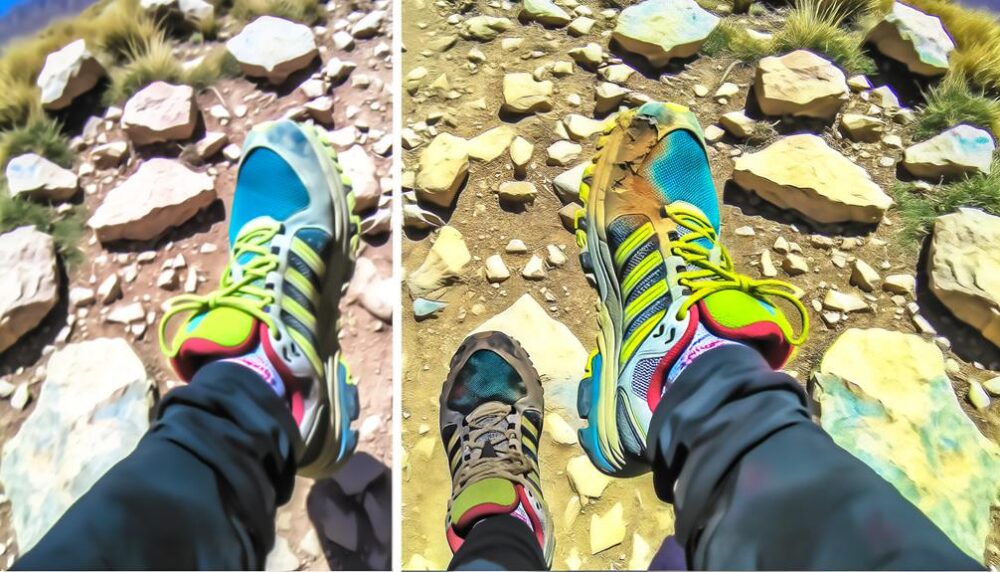
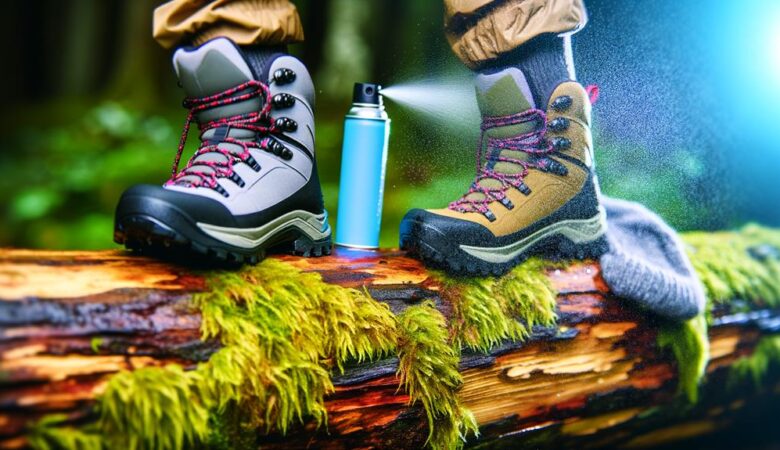
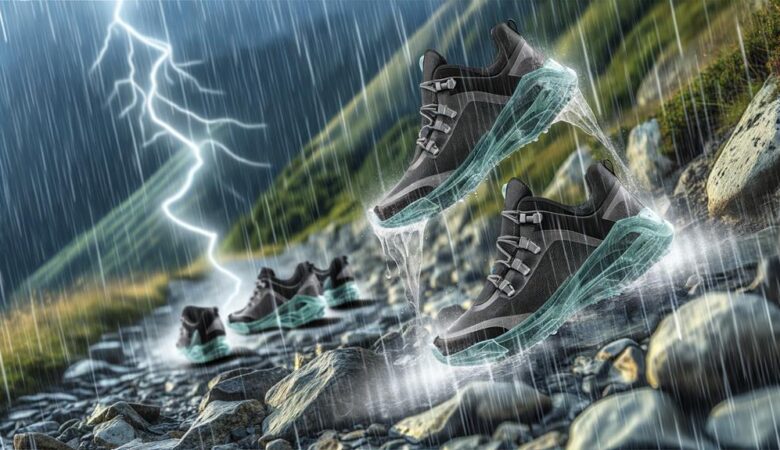
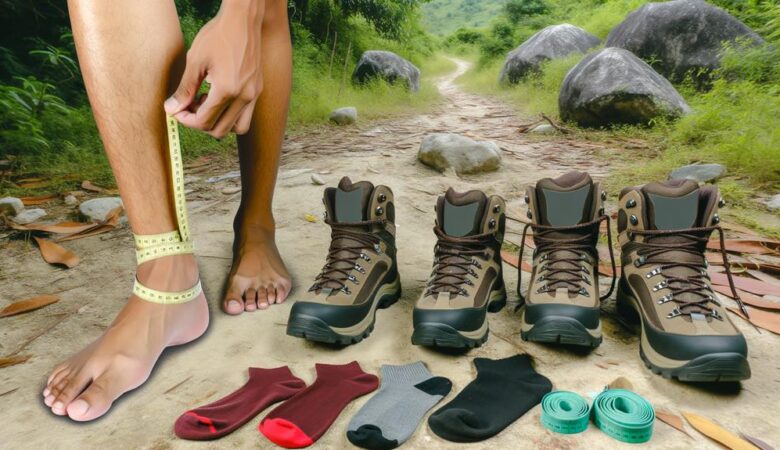
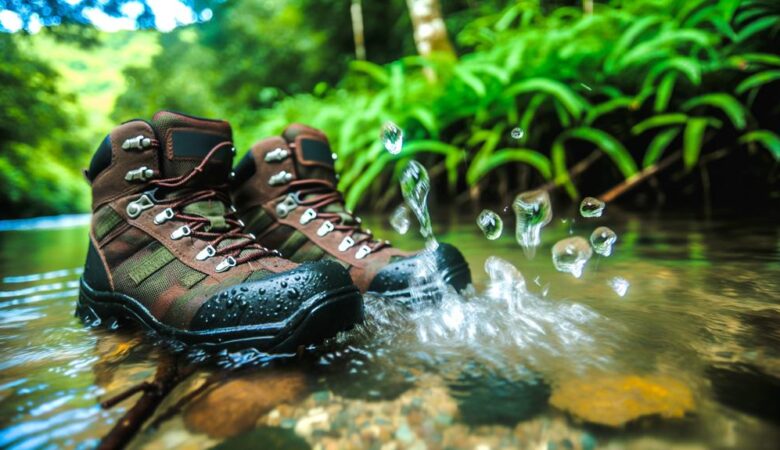
Leave a Reply